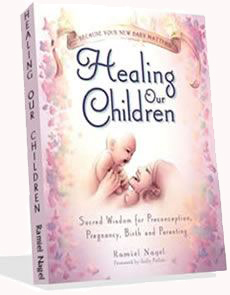The ease of w hich childbirth was accomplished in Indigenous tribes stands in stark contrast to the phenomal rate of birth interventions and cesarean birth’s in the Western world. Today, modern Mother’s and Infants suffer needlessly as a result of a birth process that is out of balance. Why is this the case?
hich childbirth was accomplished in Indigenous tribes stands in stark contrast to the phenomal rate of birth interventions and cesarean birth’s in the Western world. Today, modern Mother’s and Infants suffer needlessly as a result of a birth process that is out of balance. Why is this the case?
During his field studies with indigenous groups, Dr. Weston Price learned about the ease at which many indigenous women gave birth. He noted how they would “take a shawl and either alone or accompanied by one member of their family retire to the bush and give birth to the baby and return with it to the cabin.”
What does it take for a safe and natural birth?
According to Dr. Kathleen Vaughn, who studied the births of women in rural India.
- A round pelvic brim
- flexible points
- A natural childbirth position (such as squatting)
A Safe Birth with a Round Pelvic Brim
As shown in
Healing Our Children, a round pelvic brim is the result of good bone structure. The pelvic brim is the inner bowl of the pelvis which your babies head must rotate through for birth. Please note that women with square hips may have a round pelvic brim. It is something that may not totally be easy to distinguish to the amateur observer. The pelvic brim is formed when the rest of the mother’s bones are formed, in the womb of her mother. The mother’s bone structure is then reinforced throughout childhood with good nutrition. In the case of poor nutrition, which is fairly common, the shape of the pelvic brim can narrow at various points, in particular the front. The result is a more difficult birth process.
About The Author
Ramiel Nagel admin
Ramiel Nagel is the author of Healing Our Children and Cure Tooth Decay and is dedicated to supporting natural health for your family.
View Authors Posts

Learn More About Fertility, A Healthy Pregnancy, Natural Birth, and Natural Parenting

If you have enjoyed this website, then the published book which this website is based upon, "Healing Our Children,"
is a must read. A vibrant and healthy child can be yours. Even your doctor or midwife do not know the vital information
revealed in this book. Give your best to your children and future children...
 Healing Our Children Testominials ...
Healing Our Children Testominials ...
Healing Our Children will serve as an important tool in reversing the now obvious trend to physical degeneration and restoring vibrant health to all children.
Sally Fallon, President,
Weston A. Price Foundation
I've read over 12 books on this topic and this is my number one book to the extent that it's become my bible, in that I've read it over 5 times and my husband has also read it. Ramiel's book really helped us along this journey and I can't recommend this book enough. It's truly is life changing!! If you are going to buy a diet / nutritional / lifestyle book for pre-pregnancy, pregnancy or for children, this book would be my number one choice.
Jena Morris - Australia
My daughter just turned 5 and we adopted the recommendations you mention in the book. I have to say that I have never seen her that happy. Always in a good mood and I've never seen a baby that smiley.
Serge France
If you are planning to have a child, be sure to read the book, "Healing Our Children."
"Healing Our Children" will help you prepare for a healthy pregnancy and also contribute to the health and wellness of your entire family.
Pam Killeen,
NY Times Best selling Author
This truly is a book to heal our future generation of children!
Hally Cuttner
Ramiel Nagel's book "Healing Our Children", lovingly provides holistic perspectives on the many facets of parenting and family life. Through the guidance of this book we have become more aware and enlightened parents. Overall, this book exudes an energy of life and honesty. It is a refreshing addition to the run of the mill parenting guide. Thank you Rami!
Jamie Busch, New Jersey
This book is a treasure for new families, for all those who are planning on having children or already have young kids.
Olga
In this book Rami explains the basics of how nutrition is linked to so many of these so-called "incurable" diseases. At the end of the day, there are no shortcuts. We do need to take full responsibility of raising our children properly.
Sandeep Agarwal
Hide
 hich childbirth was accomplished in Indigenous tribes stands in stark contrast to the phenomal rate of birth interventions and cesarean birth’s in the Western world. Today, modern Mother’s and Infants suffer needlessly as a result of a birth process that is out of balance. Why is this the case?
hich childbirth was accomplished in Indigenous tribes stands in stark contrast to the phenomal rate of birth interventions and cesarean birth’s in the Western world. Today, modern Mother’s and Infants suffer needlessly as a result of a birth process that is out of balance. Why is this the case?

















